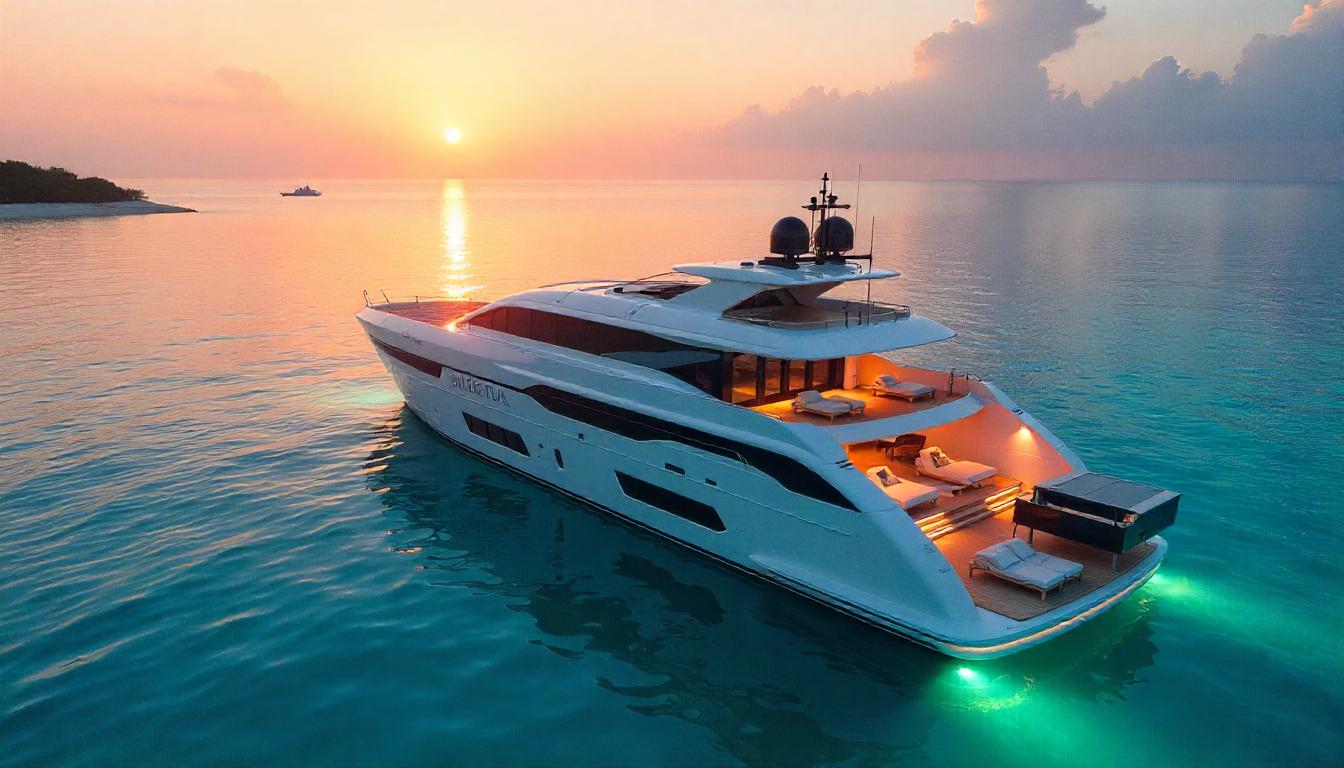Yacht design innovations in 2025 are revolutionizing the sailing experience, blending cutting-edge technology with unparalleled comfort for a sustainable and luxurious journey. As of Friday, May 23, 2025, at 10:58 AM +05, advancements in eco-friendly propulsion, smart systems, and interior design are shaping the future of yachting. These developments cater to modern travelers seeking both adventure and relaxation. This article delves into the latest future yacht design trends, highlighting how they enhance comfort and technology at sea.
Sustainable Propulsion Systems
Sustainable yacht design is at the forefront of innovation, with eco-friendly propulsion systems leading the charge. For instance, hybrid engines, like those in the Silent 80, combine electric motors with diesel generators, reducing emissions by up to 40%. Additionally, hydrogen fuel cells, as seen in the Aqua concept by Sinot, emit only water vapor, offering a zero-carbon solution.
Moreover, solar panels integrated into deck surfaces power onboard systems, cutting reliance on fossil fuels. Transitioning to this, these systems ensure quieter voyages, enhancing the serenity of the sea. Consequently, sustainable propulsion makes yachting more environmentally responsible without sacrificing performance.
Smart Technology Integration
Innovative yacht technology is transforming how yachts operate, with smart systems enhancing efficiency and safety. For example, AI-driven navigation systems, like those developed by Rolls-Royce, optimize routes in real-time, reducing fuel use. Furthermore, smart sensors monitor engine health, alerting crews to potential issues before they escalate.
Additionally, voice-activated controls allow guests to adjust lighting, temperature, or entertainment systems effortlessly. Transitioning to this, connectivity via Starlink satellite internet ensures seamless communication even in remote areas. Therefore, smart technology elevates the onboard experience with modern yacht comfort features.
Enhanced Interior Comfort
Modern yacht comfort features are redefining luxury through innovative interior design. Expandable living spaces, such as fold-out terraces on the Sanlorenzo SX112, increase deck area for relaxation. Moreover, noise-canceling materials in cabins, like those used by Feadship, reduce engine vibrations, ensuring peaceful sleep.
Furthermore, wellness-focused amenities, such as onboard saunas and air purification systems, cater to health-conscious travelers. Transitioning to this, modular furniture allows customization for different activities, from dining to lounging. Consequently, these designs prioritize comfort, making every journey more enjoyable.
Advanced Hull and Stability Designs
Advanced yacht technologies are improving stability and efficiency through hull innovations. For instance, hydrofoil systems, like those on the Princess R35, lift the hull above water, reducing drag and increasing speed by 20%. Additionally, active stabilization systems, such as gyroscopic stabilizers, minimize rolling in rough seas, enhancing comfort.
Moreover, lightweight composite materials, like carbon fiber, improve fuel efficiency without compromising strength. Transitioning to this, these designs allow yachts to access shallow waters, expanding exploration possibilities. Therefore, hull innovations ensure smoother and more efficient voyages.
Eco-Friendly Materials and Design
Sustainable yacht design extends to materials, with eco-friendly options gaining traction. For example, recycled teak and bamboo are replacing traditional hardwoods in decking, reducing deforestation. Furthermore, non-toxic, water-based paints lower harmful emissions during construction and maintenance.
Additionally, biophilic design elements, like living green walls, improve air quality and bring nature indoors. Transitioning to this, these materials align with environmental goals while maintaining luxury aesthetics. Consequently, eco-friendly design ensures yachts are both beautiful and responsible.
The Role of Virtual Reality in Design
Virtual reality (VR) is a game-changer in future yacht design trends, allowing for better customization and planning. For instance, designers use VR to create 3D models, letting clients “walk through” their yacht before construction begins. Moreover, VR simulations test layouts for functionality, ensuring optimal space use.
Furthermore, clients can preview lighting or decor options in real-time, making decisions easier. Transitioning to this, this technology reduces errors and speeds up the design process. Therefore, VR enhances the personalization of advanced yacht technologies.
Conclusión
Yacht design innovations in 2025 are setting new standards for comfort and technology at sea, with sustainable propulsion, smart systems, and eco-friendly materials leading the way. From hybrid engines to VR design tools, these advancements cater to modern demands for luxury, efficiency, and environmental responsibility. As the industry evolves, future yacht design trends promise to make sailing more comfortable and technologically advanced. Embrace these innovations to experience the ultimate yachting journey in a sustainable and luxurious way.

 Yacht Design Innovations: The Future of Comfort and Technology at Sea">
Yacht Design Innovations: The Future of Comfort and Technology at Sea">
